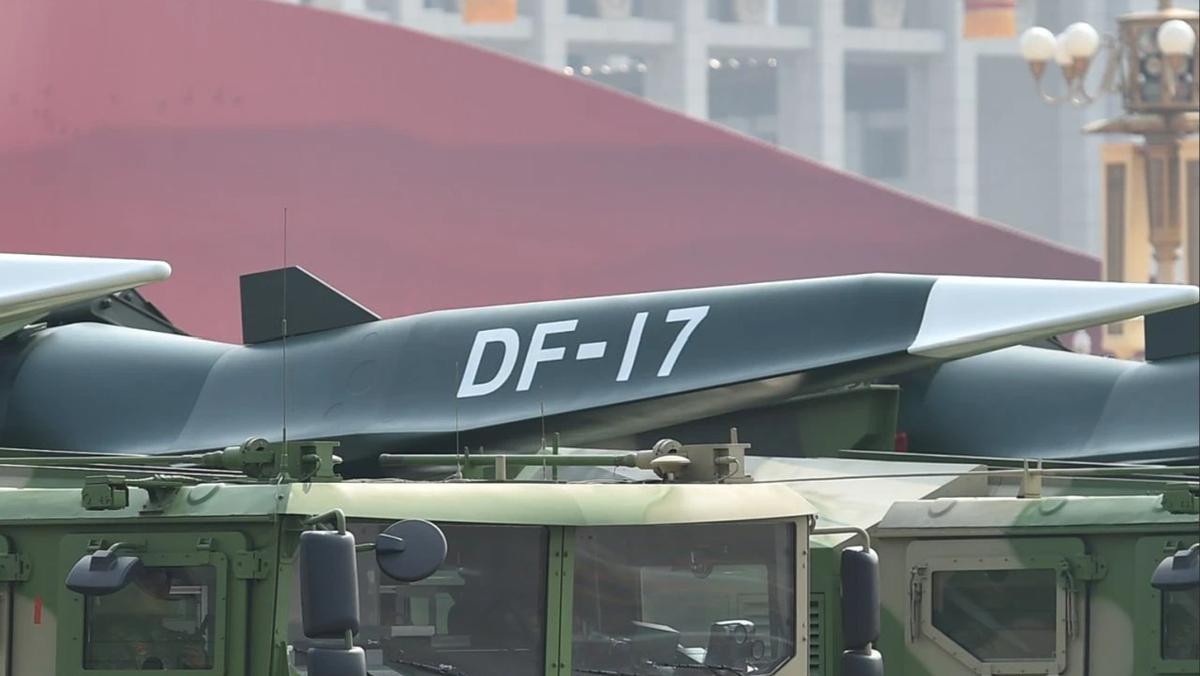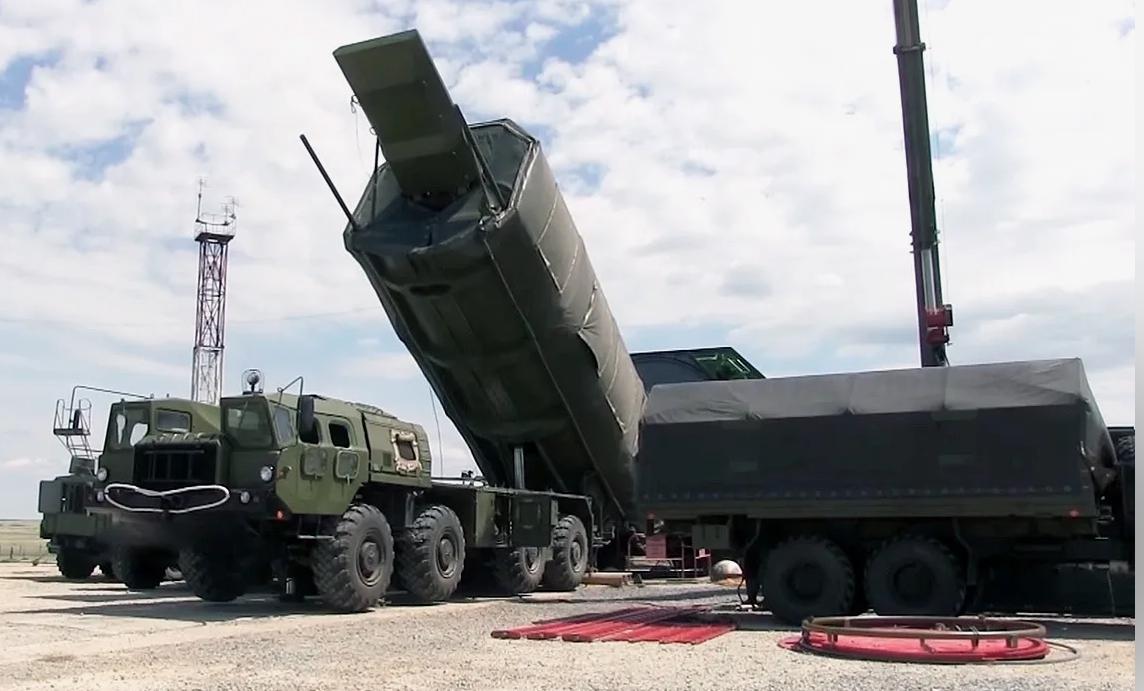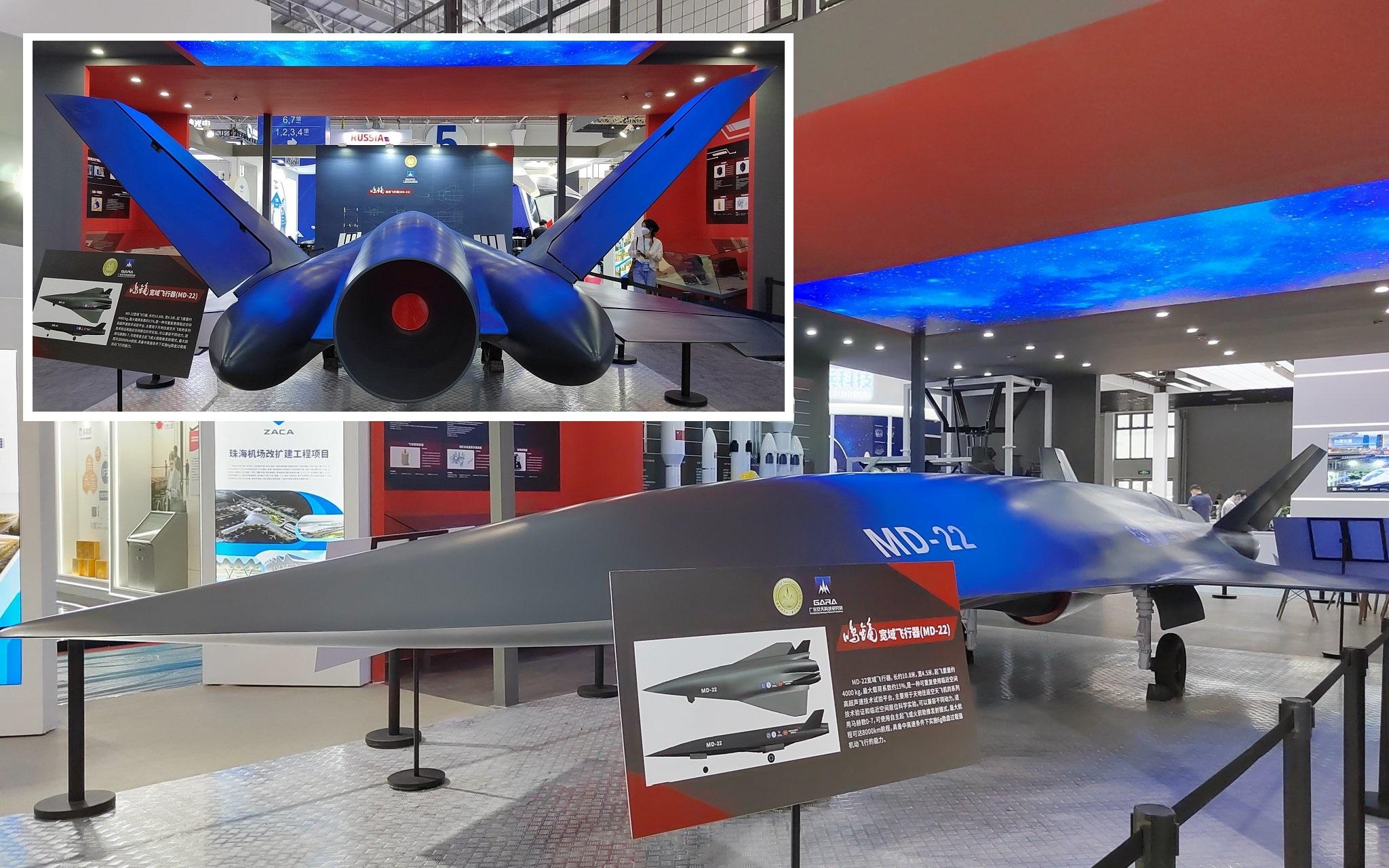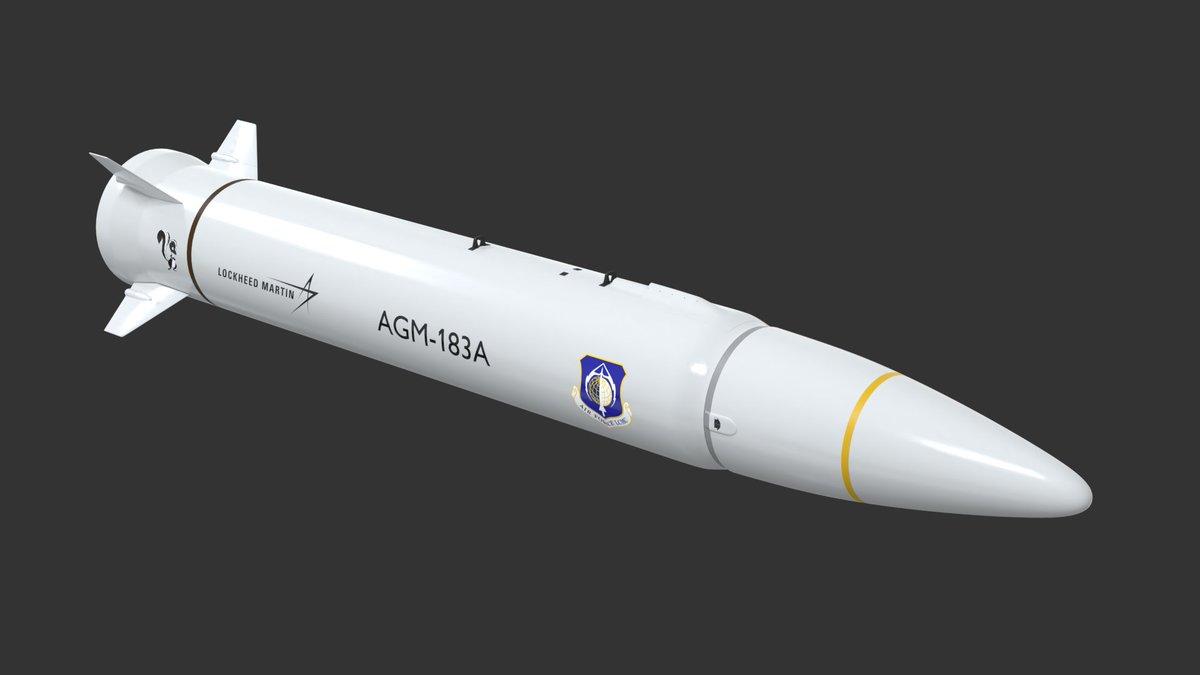China surpasses US, Russia in hypersonic weapons A race for speed with unforeseen consequences
The US has recently conducted successful tests of its hypersonic missile. However, simultaneous assessments suggest that China has surged ahead of both the United States and Russia in developing hypersonic missile technology. How can this affect the balance of military forces and relations between the superpowers?
Hypersonic wind from the East
The United States military intelligence agency DIA, followed by Bloomberg, claims that China has already taken first place in the world in the field of hypersonic systems. And The Eurasian Times believes that this will happen in the near future. The People's Republic of China really pays great attention to such a promising area as hypersonic delivery vehicles for nuclear and conventional ammunition. And it seems that the efforts and funds expended has not been wasted. Recently, several powerful corresponding systems have appeared in China. First of all, these are the Dongfeng-17 (DF-17) missile, the Xingkong-2 cruise missile, the MD-22 unmanned aerial vehicle and other UAVs. The DF-17 is the latest hypersonic ballistic missile, and much of its data is classified.
In some sources, Dongfeng-17 is characterized as a medium-range missile, in others - long-range. Usually, they talk about 1800–2500 km flight distance. But American intelligence suggests that the DF-17's range could be 5,000-8,000 kilometres. Some experts also talk about a range of 12–18 thousand kilometres. But unlike other Chinese ballistic missiles, the DF-17 is equipped with the DF-ZF hypersonic unit. First, it launches using a conventional rocket launcher. But at an altitude of 60 km, the most interesting thing happens - the separation of the hypersonic glider, which rushes towards the target at a speed of up to 5-10 Mach numbers (according to other sources - up to 24 Mach). After which the DF-ZF guided combat system turns into an extremely difficult target for conventional air defense systems. Firstly, it is capable of flying along a flat trajectory and at low altitudes, which makes its long-range detection and interception extremely difficult. Secondly, its flight is adjusted in real time. While a missile on a ballistic trajectory, even at Mach 20, can be predicted and intercepted, a hypersonic complex is capable of manoeuvring and evading. And the attack of “Dongfeng” becomes unpredictable, like the blow of a traditional jian sword, but only in a hypersonic version.

There is information that Dongfeng-17 is capable of deploying several combat elements to different targets. Also, the DF-ZF can carry both a nuclear charge and conventional ammunition. Dongfeng-17 is also called the “aircraft carrier killer.” It is assumed that the US Navy will not be able to defend against hypersonic strikes. And even without the use of nuclear weapons, their high kinetic force will lead to disastrous destruction. On the ground, the DF-17 travels on a mobile-wheeled unit, and there is also an air-launched version of the YJ-21 on the Xi'an N-6K bomber. The DF-17 hypersonic system has already been successfully tested and entered service with the People's Liberation Army of China (PLA).
In 2021, the PLA missile forces were able to launch the DZ-ZF warhead into low orbit, almost circling the Earth, after which a missile was launched at the target. This brought the United States back to memories of Soviet plans for “orbital bombardment” from satellites (FOBS system) and plunged the American military leadership into almost shock. Beijing said that they were simply testing a reusable spacecraft. Chief of the Joint Chiefs of Staff General Mark Milley sounded the alarm: “What we saw was a very significant test event of a hypersonic weapons system. And this is very worrying. And they have gone from a peasant infantry army, which was very, very large in 1979, to a very capable army that covers all areas and has global ambitions. Over the next 10, 20, 25 years, I do not doubt that the greatest geostrategic challenge for the United States will be China.”
The hypersonic cruise missile Sinkong-2 (Starry Sky-2), which was tested in 2018, has also become a very promising system. The wings of the rocket are a kind of “breakwater”, and the vehicle moves thanks to its own hypersonic shock waves, creating lift without drag. The PLA missile forces also have Dongfeng-100 (CJ-100) cruise missiles, which many experts classify as supersonic.
What about hypersonic weapons in other countries, including Russia and the United States? And is China really capable of surpassing them today? Or has it already surpassed them?
Moscow-Beijing hypersonic axis
The Russian Armed Forces are armed with such hypersonic weapons as the Kinzhal air-launched missiles, the Kh-47M2, the Avangard 15P771 (silo-based) and Zirkon 3M22 (sea-based) hypersonic missile systems.
Kinzhal missiles fired from MIG-31 fighters can reach speeds of up to Mach 10 at a range of up to 1,200 miles. However, some Western experts refuse to recognize the Daggers as a hypersonic weapon in the full sense of the word. In their opinion, the X-47 is a modernized version of the Iskander ballistic missile, which actually exceeds the speed of sound by more than 5 times. But, according to critics, the Kinzhal is not capable of serious manoeuvring, which, they say, requires classifying it as a quasi-ballistic missile. Also, during the armed conflict in Ukraine, the Ukrainian Armed Forces and Western sources reported that some Kinzhals were intercepted using the Patriot air defence system. In turn, the Russian side is talking about the destruction of several Patriot installations with the help of its hypersonic Daggers.

The Zircon and Avangard hypersonic complexes are more powerful and modern. At the same time, one can come across the opinion of experts that the Zircon missile is a naval analogue of the Dongfeng-17. It is also reported that the DF-ZF became the first combat hypersonic complex in the world. As evidence, statements are given that the DF-17 system was developed earlier than Zircon - by 2019. And in the same year, China became the first state in the world to demonstrate hypersonic weapons - Dongfeng-17 participated in the parade in honour of the 70th anniversary of the People's Republic of China. “Zircons” were first deployed at the end of 2022 - beginning of 2023 on the Russian Navy submarine Severodvinsk and on the frigate Admiral Gorshkov.
But another powerful hypersonic complex “Avangard” 15P771 was put into service with the Strategic Missile Forces of the Russian Federation (Orenburg division) already in 2019. And its development began in the mid-1980s in the USSR; in the modern Russian Federation, they wanted to close the project several times. The Avangard hypersonic glide vehicle is launched onto a trajectory using the RS-28 Sarmat ballistic missile, after which it begins independently controlled movement at a speed of up to Mach 28. In flight, the Avangard is capable of changing direction and can bring down a nuclear warhead with a yield of up to 2 megatons on a target. This warhead is twice as powerful as the US Army's most powerful nuclear warhead.
If one continues to compare Russian and Chinese hypersonic systems, then, according to a number of experts, the Chinese DF-ZF warhead is a complete analogue of the Yu-71 warhead of the Russian Avangard. However, the PLA did not have a standard missile carrier of the Sarmat ICBM type for a long time. But it is precisely with the help of an intercontinental missile of this class that it is possible to destroy targets using “orbital bombing”, bypassing the air defence of the supposed enemy through the South Pole. Therefore, when in October 2021 the People's Republic of China tested the DF-ZF warhead, which made an almost complete revolution around the Earth, the civilian space rocket Long March (Long March) CZ-2C was used as a carrier.
The Russian Air Force also has R-37 hypersonic air-to-air missiles in service. Experts believe that the Chinese Air Force is buying Russian Su-35 fighters, which are inferior to China's J-16 and J-20, precisely because of these well-proven missiles.
And it seems that what China is definitely leading in is the development of hypersonic UAVs. Among them is the WZ-8 ("No Detection") reconnaissance drone unveiled in 2019. According to one version, at that time it was the world's only hypersonic drone. And this UAV is one of the PRC's most secretive military developments. It is similar to the American Lockheed D-21, but unlike it, the WZ-8 is capable of reaching hypersonic. And this UAV also uses infinity wing technology. The WZ-8 is carried by the Xi'an H-6K bomber, but once released, it flies using its own jet engines at a speed of about Mach 7. Presumably, it is also equipped with a stealth system. This, along with its high speed, will probably allow the WZ-8 to bypass air defence systems. It is also assumed that the WZ-8 can be used not only for reconnaissance but also as an attack UAV.
In 2022, China presented a mock-up of the MD-22 hypersonic UAV with a range of up to 8,000 kilometres. And in March 2024, China reported that the experimental hypersonic drone surpassed the best US F-22 fighter in several characteristics. It is reported that externally it is similar to the MD-22. This is probably the backdrop for US military intelligence and Bloomberg's claim that China is ahead of Russia in hypersonic weaponry. But rather, in most cases we can speak of approximate parity between Russian and Chinese hypersonic systems. However, China has a large number of hypersonic missiles, as well as the infrastructure to support them.

There is no information in open sources about cooperation between Russia and China in the field of hypersonics. However, certain similarities in the missile systems in service suggest that such cooperation in some areas is theoretically possible.
The West starts - and loses?
Since 2008, the United States has been accelerating its hypersonic weapons programme and trying to regain leadership in this field. The HAWC hypersonic project was developed by such major US weapons corporations as Raython Technologies and Northrop Grumman. SCIFiRE, LRHW and other programmes are also being implemented. However, according to Western experts, the results have remained relatively modest for a long time. American generals admit: "We are not as advanced as the Chinese or Russians in terms of hypersonic programmes.

Thus, in the United States, tests of a hypersonic aircraft similar to the Chinese Xingkong-2 were unsuccessful. At the same time, the American Army, Air Force and Navy are developing hypersonic systems for themselves separately.
Today, the air-launched AGM-183A missile (ARRW) is a key US hypersonic weapons project. But for a long time, Americans were plagued by failures here. In April 2021, the first real launch of the AGM-183A failed - the rocket simply did not take off from the carrier aircraft. The fourth test was to be decisive for the fate of the project. And just the other day, on March 17, 2024, the AGM-183A hypersonic missile was successfully launched from a B-52 bomber in Hawaii.

Data on the ARRW is classified, but experts assume that this platform can provide projectile acceleration up to Mach 18-20. The B-1 Lancer stealth bomber will carry up to 31 hypersonic missiles. The same hypersonic missiles will also receive the F-15 multirole fighters.
Three successful test flights have been conducted before the beginning of 2024 and under the HAWC programme. As reported in open sources - hypersonic missiles of this project should be in combat readiness by 2027. By early 2024, the Australian company Hypersonix was to produce for the US Army the first model of hypersonic drone DART AE with a speed of Mach 7, a range of 1,000 kilometres and a payload of 10 kg. Other companies are also in the process of development.
In view of the deep secrecy surrounding the further development of hypersonic weapons, the United States' capabilities in this area should not be underestimated. However, according to open sources, there are no hypersonic missiles officially in service with the United States Army today.
India and Iran are also reported to have hypersonic missiles, and the DPRK is also reported to have relevant developments. France, Great Britain, Australia, Japan and South Korea also have hypersonic weapons programmes. And recently it became known about the intentions of the United States, Britain and Australia within the AUKUS bloc to conduct joint development of hypersonic weapons.
In the future, the potential of hypersonic weapons will make it possible to inflict unacceptable damage on the enemy only with the kinetic force of a projectile, without nuclear warheads. Hypothetically, this would make global war possible without the use of weapons of mass destruction. Is this good or bad for humanity? The question is rhetorical.
As for the intensified program for the development of hypersonic weapons in China, it became Beijing’s response to the ever-increasing military-political and economic pressure from the United States. In particular, the creation of the AUKUS bloc, a Pacific analogue of NATO with a clearly anti-Chinese orientation. At the same time, today the United States cannot fully defend and respond to China’s hypersonic weapons, other than the use of nuclear warheads. And the presence of hypersonic missiles in China, along with the generally growing military power of the PLA, is a very powerful argument against a possible military escalation in the region.
By the way, the name of the Chinese hypersonic missiles “Dongfeng-17” is translated as “Wind from the East”. And this is part of the famous quote by the founder of the People's Republic of China and the leader of the Communist Party of China, Mao Zedong: “The wind from the East overcomes the wind from the West.”






